5 years ago
System Integration
Planning on System Integration Part 2: How and Why Should You Integrate Your System
IT System Integration Methods
Methods Of System Integration
Purpose Of System Integration Methods
System Integration Methods
Systems Integration Methods And Technologies
Types Of System Integration Methods
System Integration methods – In the previous article we have talked about System Integration: what is it and how it can help your business. To sum up, System Integration is the process of linking various independent components, for example IT systems, to communicate with each other and act as one co-ordinated system.
Now, we are going to dig deeper into the System Integration methods and what benefits you can get by integrating your system.
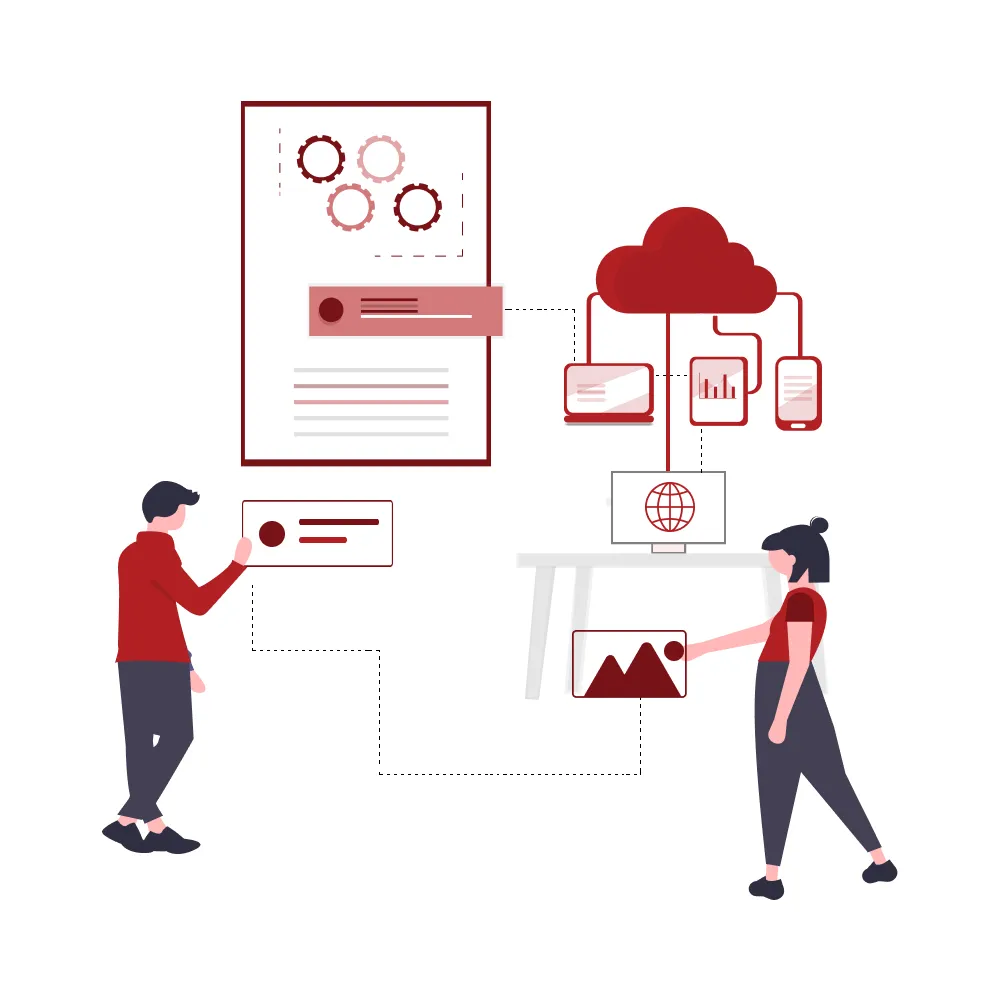
System Integration Methods
According to Moore, system integrator works integrating discrete systems using several techniques such as computer networking, enterprise application integration, business process management, or manual programming.
System Integration is usually completed to comply with your business goals using the very latest technology. It can be implemented using various methods classified according to their characteristics:
Vertical Integration
With vertical integration, subsystems are integrated according of their functionality by creating ‘silos’ of functional entities. This system creates a silo starting from the basic function and build each layer and element upward (vertical). This is the most basic and cheap integration that involves a few vendors, partners, and developers in the beginning, but becomes more expensive over time because to meet further business requirements, new silos must be created. Re-using the subsystem to create new functionality is not possible.
Horizontal Integration
Horizontal integration involves creating specialized subsystem dedicated to communicate between other subsystems, ensuring that there is only one interface between any subsystem to communicate. The benefit of this method is that each sub-system may be replaced with another without affecting the others by using totally different data and interfaces. This reduces the costs of integration and provides extreme flexibility, allowing complete replacement of one subsystem with another subsystem which provides similar functionality but exports different interfaces.
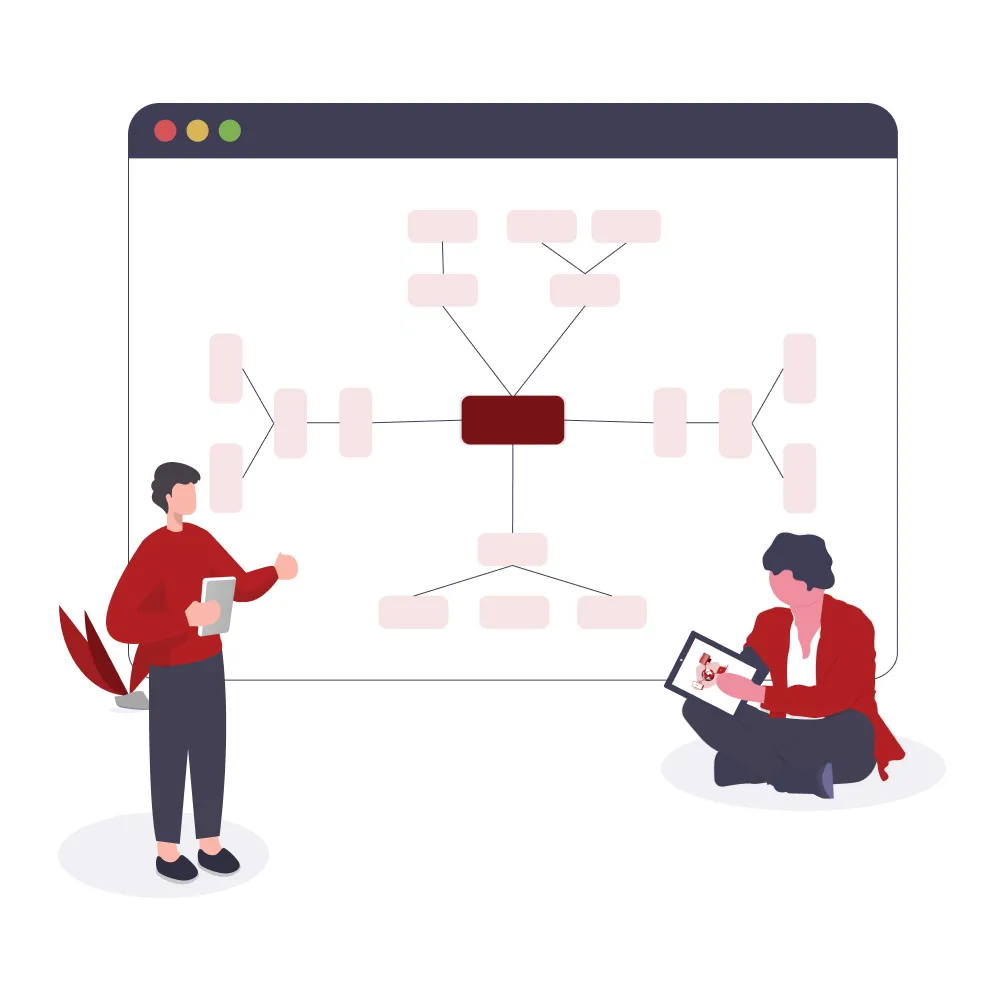
Star Integration or Spaghetti Integration
This point-to-point method connects each system to multiple subsystems, making the diagram look like a star. However, the more subsystems there are, the more connections are made, and the more bulkier the system will be, making it ended up look like a plate of spaghetti. Managing complex system with this metod can be quite demanding as a change in every system will affect the subsystems connected to the system. However, from the feature perspective, this method often more preferable due to the extreme flexibility of the reuse of functionality.
Common Data Format Integration
Integrating different data system usually requires data transformation. Data coming out from one system will need to be transformed into different data format that is used by the receiving system.
With this method, a common format is established to remove the reliance for an adapter to translate between various application formats using an enterprise application integration (EAI) system. Enterprise application integration (EAI) system usually defines an independent application data format. Data transformation service to help converting between specific and common format is usually done in 2 steps: Adaptor changes information from application format to the common bus format. Then, the implementation of semantic transformation (for example, converting the post code to the city name, splitting/merging objects from one application to objects in another application, etc)
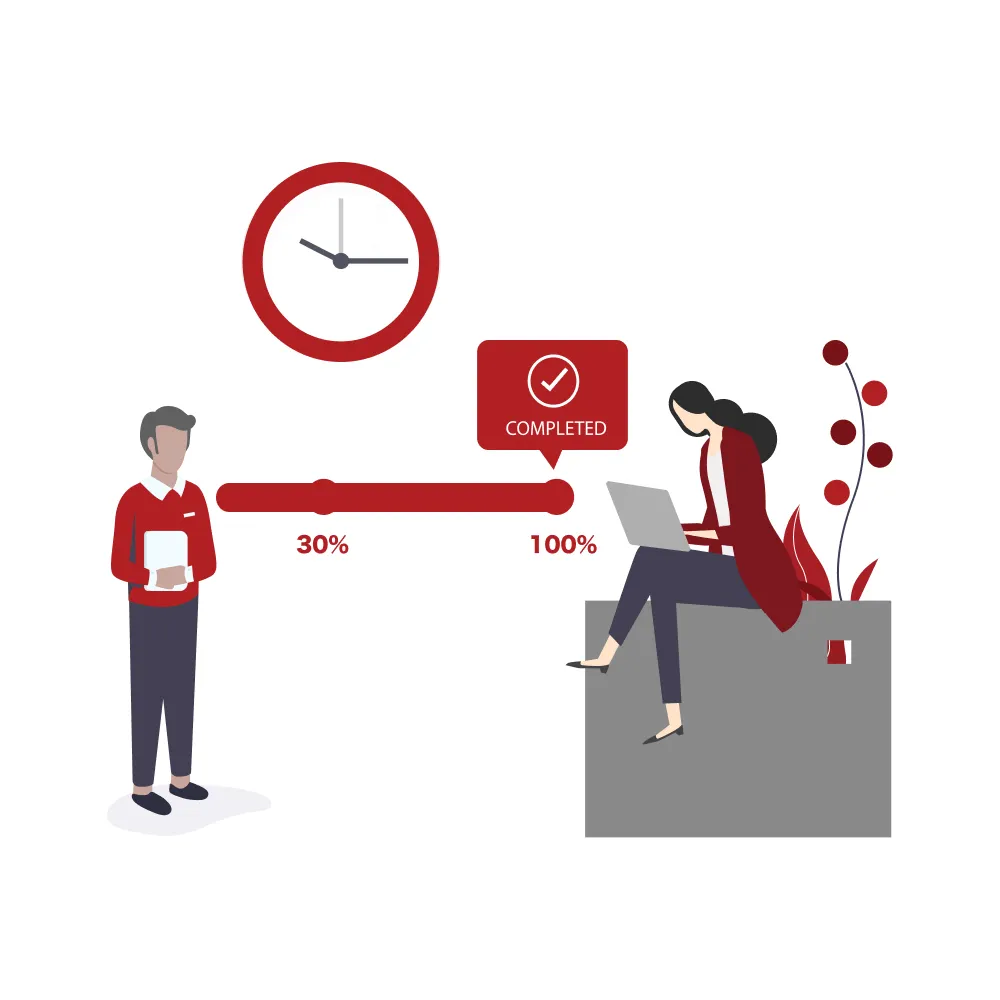
Benefits of System Integration
System Integration can be your company’s key to success. Not only it ensures seamless data connectivity and reduces the possibility of errors, it also improves both the internal workflow of your organisations and maintains your company position in the market. By integrating your system, you will be able to:
– Improve real-time visibility that will allow you to work with the latest information. When different departments are not integrated, acquiring information manually can take hours, and it sill may not be accurate. System Integration will minimize the risks caused by inaccurate and delayed information and enable you to make critical decisions based on those data.
– Boost employees productivity and process efficiency with automation that eliminates manual work. As a result, your employees can finally focus on their actual tasks instead of repeatedly entering data to every subsystem uses by the company. Having most of your processes integrated will also reduce the necessity of hiring new employees.
– Increase your sales with improved customer experience and better customer service as a result of data connectivity across all departments. From the customer’s perspective, it enables them to see the availability of the product they are looking for, and provide them with smooth and easy buying process. From the employees’ perspective, it allows the to address the enquiries immediately and eventually, meet the needs of the customers.
– Save time and money with better decision making and automated system that allow you to focus on gaining new customers and developing new skill and therefore provides you with more opportunity to grow.
– Collect data that will be valuable for decision making, thanks to centralised system that gives more accurate result.
Read Next: Planning on System Integration Part 3: Phases of System Integration Process.
Find out which system integration method is the most suitable for your company. Consult your business needs with Bridge Technology Services (BTS.id). Contact us:
Phone : (+62 22) 6614726
Email : info@bts.id
HIT US UP
BRIDGE TECHNOLOGY SERVICES
HIT US UP
BRIDGE TECHNOLOGY SERVICES

Your request has been sent, please wait for our reply
Saat mencari System Integrator terbaik di Indonesia yang dapat membantu Anda melakukan integrasi sistem, sangat penting untuk menemukan System Integrator yang mengerti visi dan misi Anda, serta dapat membantu Anda mencapai tujuan bisnis tanpa banyak kendala.
Bagaimanapun, untuk pekerjaan sepenting integrasi sistem dan proses bisnis perusahaan, Anda tentu ingin bekerja dengan partner andal yang dapat memberikan solusi terbaik, bukan?
Sejak berdiri di tahun 2008, selama bertahun-tahun, Bridge Technology Services (BTS.id) telah bekerja dengan berbagai jenis perusahaan dari berbagai daerah di Indonesia. Sebagai Software House, kami telah membantu klien kami untuk mencapai tujuan bisnis melalui produk dan layanan perangkat lunak, business intelligence, big data, dan outsourcing sumber daya manusia berkualitas tinggi. Dengan pengalaman yang luas di berbagai sektor industri, kami melihat kebutuhan Anda melalui perspektif yang unik, menjadikan kami partner yang kompeten dan dapat diandalkan, serta sesuai untuk berbagai tantangan bisnis yang ada.
Kami selalu berusaha menjawab tantangan dengan sungguh-sungguh, sehingga saat klien kami bertumbuh, begitu juga perusahaan kami.
Kini, kami telah tumbuh menjadi full-service system integrator yang siap membantu perusahaan Anda bertransformasi secara digital. Dengan layanan yang komprehensif dari mulai konsultasi, analisis, perencanaan, hingga implementasi, Anda dapat mengandalkan kami untuk mengintegrasi sistem Anda tanpa kendala.
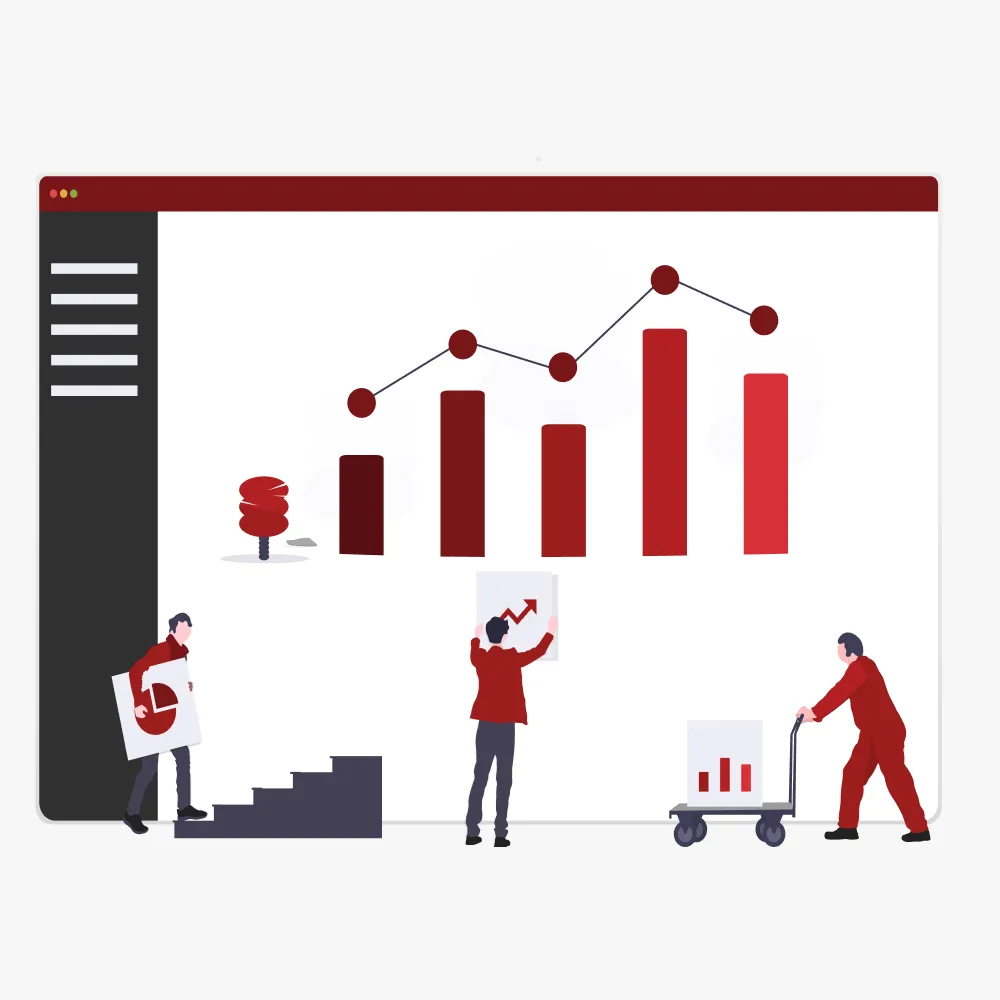
Mengapa Saya Membutuhkan Integrasi Sistem?
Saat bisnis Anda semakin berkembang, wajar jika kemudian kebutuhan akan system integrator juga bertambah. Awalnya, Anda mungkin berpikir bahwa membeli beberapa aplikasi secara terpisah akan lebih murah dan efektif dibanding membeli satu solusi yang utuh yang menyeluruh. Namun, saat protokol, format, dan teknologi kemudian berkembang dan aplikasi yang berbeda berkembang dengan cara yang berbeda pula, ekosistem dengan aplikasi-aplikasi yang tidak bisa bekerja sama akan mengakibatkan kebingungan, duplikasi data, dan inkonsistensi di dalam sistem.
Pegawai Anda akan mulai kesulitan untuk bekerja secara efisien, yang akan berimbas pada kesejahteraan perusahaan.
Untuk mengatasi tantangan yang hadir, ada beberapa cara yang bisa Anda lakukan. Misalnya, membeli perangkat lunak siap pakai (off the shelf), memesan perangkat lunak yang dibuat khusus untuk kebutuhan perusahaan Anda (custom-made), atau mengintegrasi sistem-sistem yang telah Anda pakai selama ini (system integration), yang tidak saja lebih hemat dari segi biaya, namun dari segi waktu yang harus pegawai Anda habiskan untuk mempelajari sistem baru.
Tidak hanya krusial, integrasi sistem juga dapat memberi banyak keuntungan bagi bisnis Anda. Meski demikian, sebelum merekrut system integrator untuk membantu Anda, cari tahu dulu apa itu integrasi sistem, dan bagaimana integrasi sistem dapat membantu bisnis Anda meraih kesuksesan
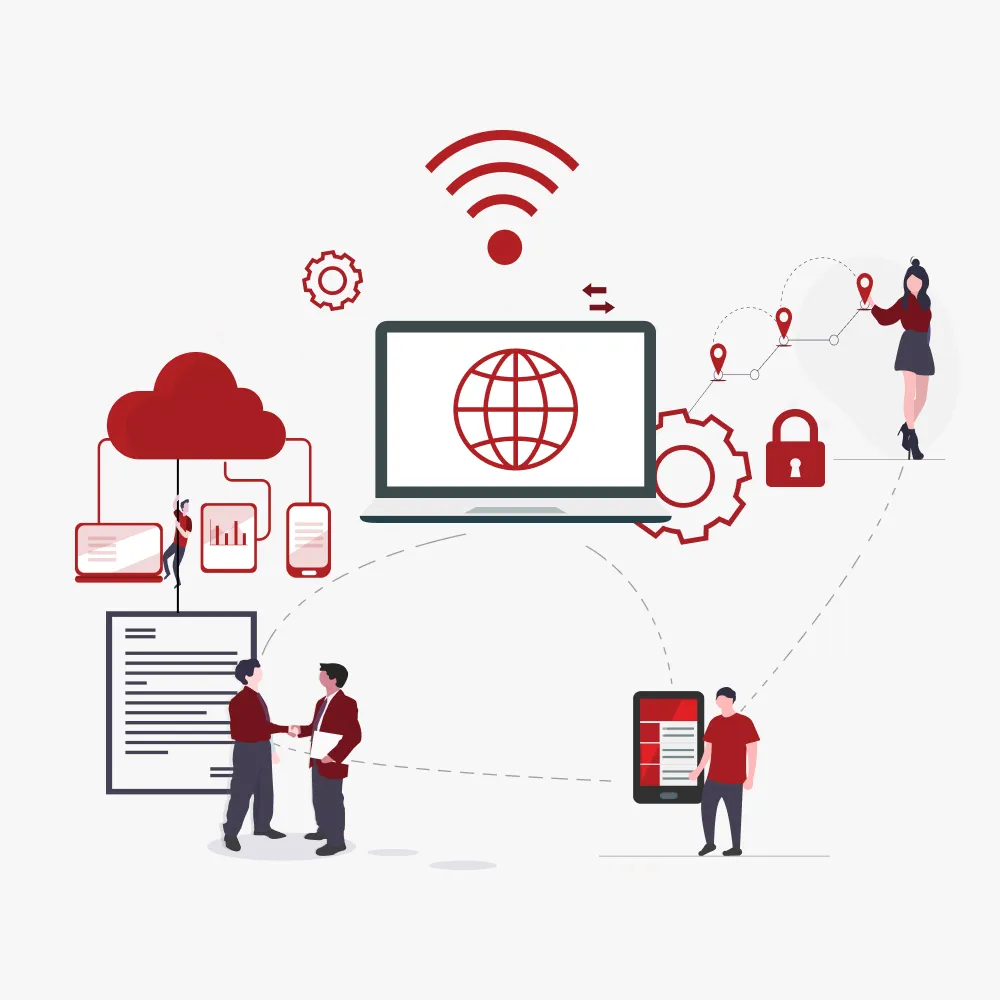
Apa itu Integrasi Sistem?
Secara sederhana, Integrasi Sistem adalah suatu proses menghubungkan berbagai komponen yang mulanya independen, agar dapat bekerja sebagai satu sistem utuhi. Sebagai solusi perangkat lunak, mengintegrasi sistem berarti menggabungkan beberapa sistem IT berbeda yang kebanyakan diproduksi oleh vendor yang berbeda pula, sehingga mereka dapat berkomunikasi satu sama lain dan bekerja secara fungsional sebagai satu kesatuan yang terkordinasi.
Membeli perangkat secara terpisah alih-alih mengembangkan satu sistem yang utuh dan menyeluruh memang akan terasa lebih murah dan mudah saat memulai bisnis. Anda juga mungkin ingin mulai dengan apa yang Anda butuhkan pada saat itu. Namun, saat bisnis Anda berkembang dan proses bisnis bertambah, kebutuhan akan sistem baru juga akan ikut meningkat, dan penambahan perangkat baru, meski lebih murah, bisa jadi berbahaya bagi bisnis Anda.
Sebagai gambaran, misalnya saja Anda memulai bisnis dengan beberapa sistem sederhana seperti perangkat lunak untuk akunting dan pembukuan. Seiring waktu berjalan, bisnis Anda pun semakin berkembang dan pelanggan Anda kian bertambah, dan tanpa bisa dihindari begitu pula dengan proses bisnis yang berlangsung di perusahaan. Di titik ini, Anda akan harus mengelola data yang lebih besar dan menambah lebih banyak sistem. Tanpa disadari, semakin banyak perangkat baru yang Anda tambahkan–untuk melacak inventori, data pelanggan, manajemen pesanan, dan lain-lain–yang akhirnya membuat arsitektur sistem Anda kusut dan proses bisnis menjadi tak efisien.

Hasilnya bisa ditebak: manajemen data yang tidak efisien, hilangnya produktivitas karena harus mengoperasikan banyak aplikasi berbeda, dan ketidakmampuan perusahaan untuk memenuhi permintaan klien. Dengan mengintegrasi sistem di perusahaan Anda, Anda tidak perlu lagi meng-input data secara manual ke dalam masing-masing sistem. Lagipula, tidak semua program baru yang Anda beli akan cocok dengan sistem yang sudah ada di perusahaan Anda, dan semakin banyak program yang Anda tambahkan, akan semakin sulit untuk mengintegrasinya dengan workflow yang ada.
Integrasi sistem adalah proses yang rumit. Maka dari itu, untuk melakukannya, Anda akan membutuhkan bantuan system integrator–baik itu dalam bentuk perusahaan, atau sebuah tim yang berisi orang-orang yang ahli–untuk mengintegrasi sistem-sistem yang berlainan–baik itu perangkat keras, perangkat lunak, maupun sistem komunikasi–di perusahaan Anda.
Selanjutnya: Sebelum melakukan Integrasi Sistem Part. 2: Bagaimana dan Mengapa Integrasi Sistem?
Siap untuk melakukan integrasi sistem? Hubungi kami:
Telp: (+62 22) 6614726
Email: info@bts.id
When it comes to outsourcing your company’s System Integration, finding the best System Integrator Indonesia that understand your goal and vision, and can achieve your business objective without any trouble, are the most important thing that you should consider when choosing a partner to help you success.
After all, for something as important as integrating your business process and system, you would want to work with a reliable partner that can bring you the best solution without compromise.
Founded in 2008, for years Bridge Technology Services (BTS.id) has been working with companies across the country. As a Software House, we have been assisting our clients to achieve their goals by providing software products and services, business intelligence, big data, and high-caliber talent sourcing. Our extensive experience in nearly all industries, giving us a unique perspective that makes us a competent and reliable partner perfect for every challenge.
We take our clients’ challenge that seriously so that when our clients grow, we grow too.
Today, we have grown to be a full-service system integrator that offers companies multiple ways to embrace their unique digital transformation journey. We have progressed and is ready to give you a seamless System Integration process. Serving you with comprehensive services from consultation, analysis, planning, till implementation and support.
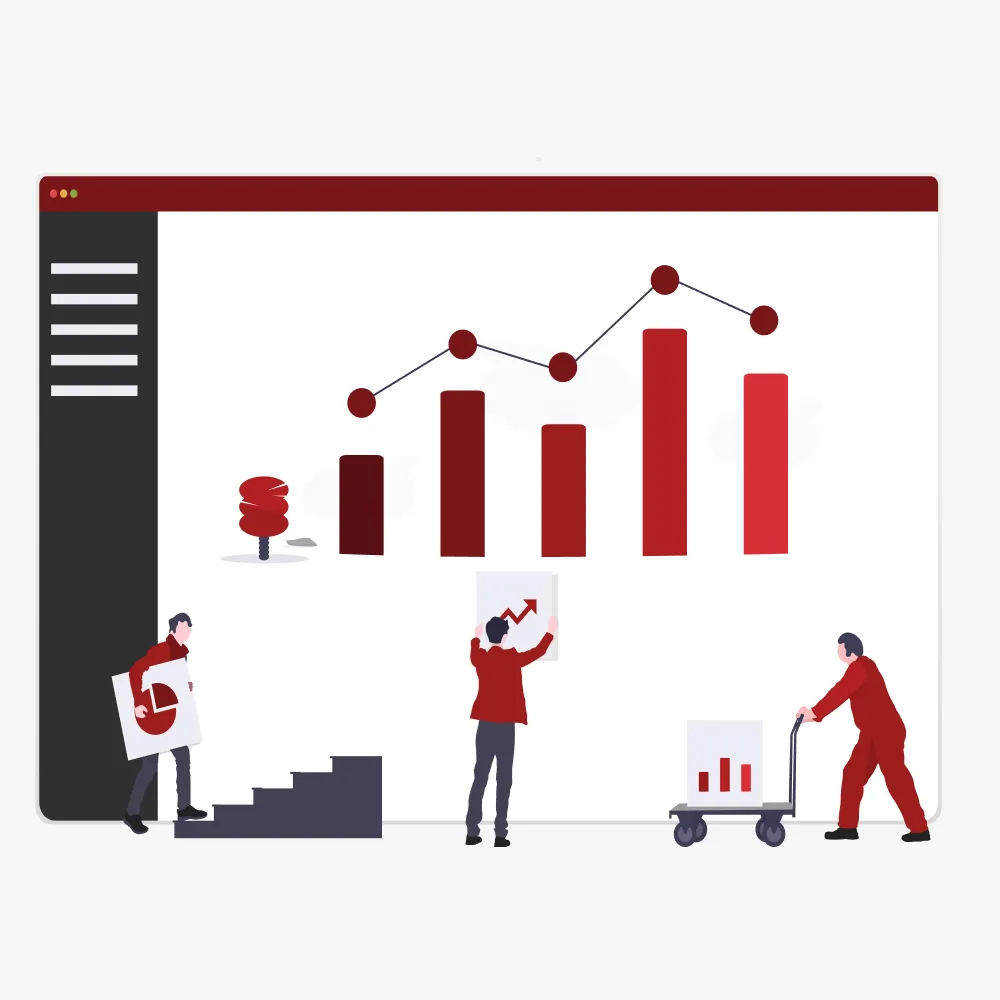
When would I need a System Integration?
When your business grows, it is only natural that the importance for a system integrator will grow as well. At the beginning, you may think that instead of acquiring an entire software solution, purchasing several independent tools will be way much cheaper and more effective. But as protocols, formats, and technologies evolve and different applications develop differently, disjunct ecosystem with applications that do not cooperate with each other will only result in confusion, duplication, and inconsistencies in the system.
Employees will have difficulties to work efficiently, and company will struggling to prosper.
To deal with the challenge and remain competitive, the options are either to buy off-the-shelf software, order a solution specifically tailored to meet your exact needs. Or, you can have your already existing and used systems integrated into one, which will save not only your money, but also time that your employees will need to learn how to use a new system.
Whilts System Integration is crucial and have a lot of benefits for companies, before planning to hire a system integrator, find what a system integration can do to help your company success.
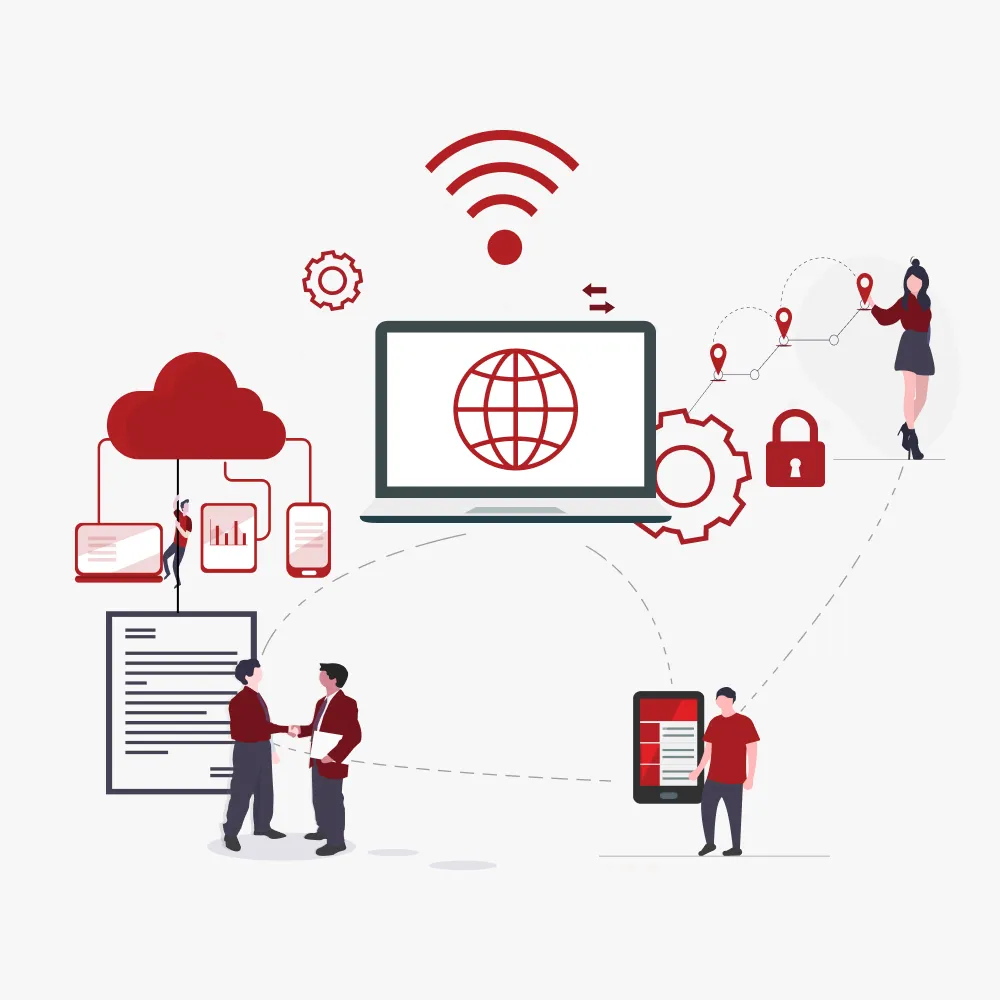
What is System Integration?
In simple words, System Integration is the process of linking various independent components to act as one co-ordinated system. As a software solution, integrating system means to put different IT systems which often come from different vendors together, enable them to communicate with each other and work functionally as a coordinated whole.
When starting a business, choosing several components is always seems like a better option. It is cheaper than having to develop an entire system. And you might want to start small with acquiring only what you really need at that moment anyway. However, as your business evolves, you will realised that you need more tools to handle more processes. Adding more components is indeed cheaper, but it is also harmful to your organization.
Starting small, you might only wanted to acquire what you really need at that moment. Probably softwares that can help you with accounts and bookkeeping. Then, your business grows and you have to deal with more and more customers. At this point, adding more processes is inevitable. You will acquire more data and add more systems. Soon as your business evolve, you will need something to keep track of your inventory, customer data, order management, and so on till the architecture of your system becomes a tangle web of inefficient processes and disparate applications.

The results are predictable: inefficient data management, employees losing productivity cause by having to use multiple applications and company will struggle to meet the demands of the clients. By integrating your system, you can avoid having to re-enter data to each of your system manually. After all, not all programs can play nicely together with the already existed system. And as you add more programs, it will become harder to integrate them into your current workflows.
To help you with the complicated process of System Integration, you will need a system integrator–whether it’s a company or a team of professionals–that can streamline your disparate systems, including existing hardwares, softwares, and communications seamlessly.
Read Next: Planning on System Integration part. 2: How and Why Should You Integrate Your System?
Ready to integrate your system? Contact us:
Phone : (+62 22) 6614726
Email : info@bts.id
System Integration Process – When integrating your system, one of the important factors of successful System Integration is the System Integrator you are working with.
After learning about what is System Integration, why should you integrate your system, and various methods of System Integration in the previous articles, now, we will find out how exactly a System Integrator would integrate your system.
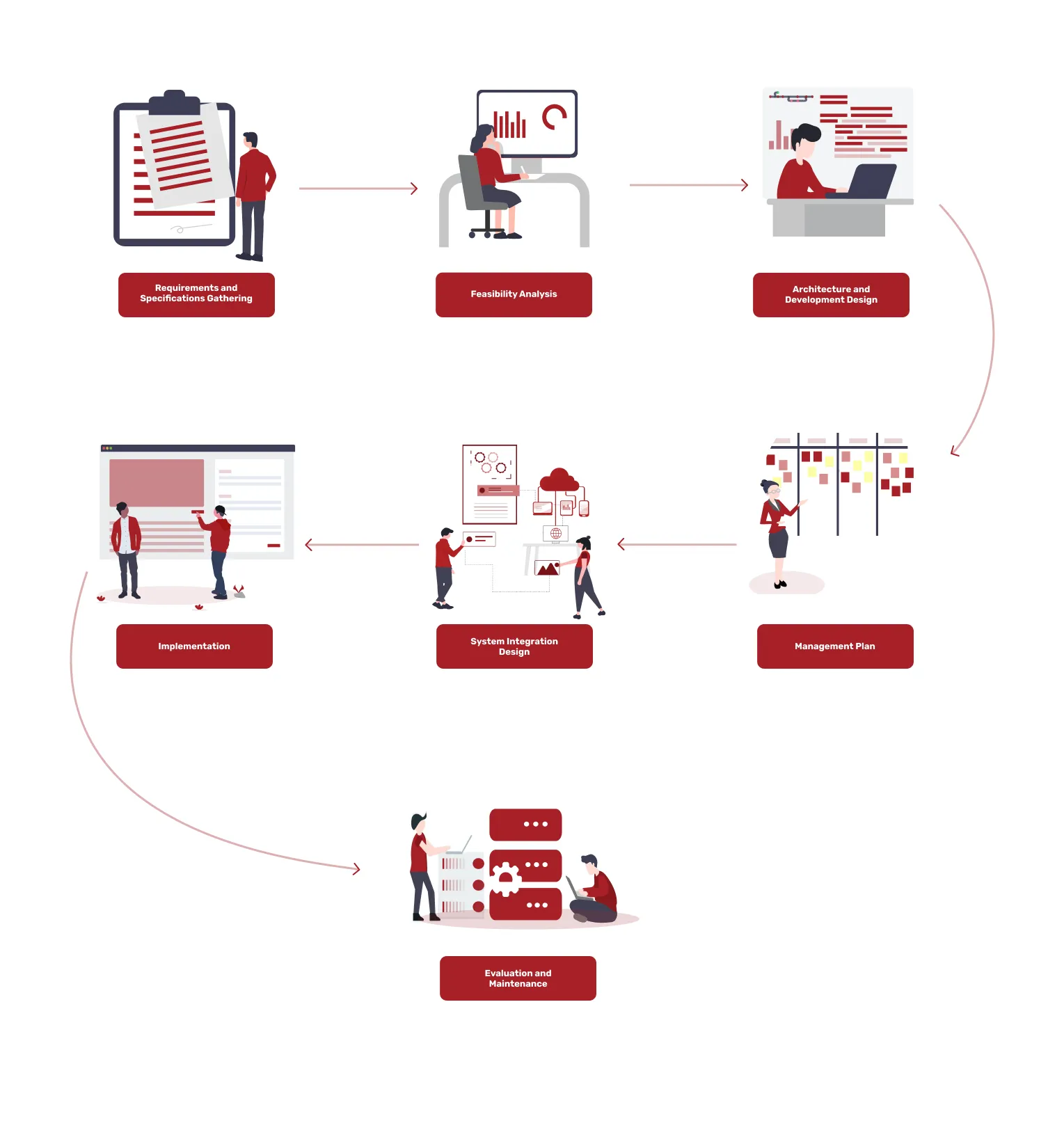
Phases of System Integration Process
System Integration is a complex task, hence the importance of hiring a reliable system integrator that can assist you with comprehensive integration service, from simple internal point-to-point connections to intricate many-to-many integrations both internally and with the third parties.
To solve your problem, a system integrator will usually design, implement, and test the integration solution, in 7 equally important phases of System Integration, which are:
1. Requirements and Specifications Gathering
The first step is where you have to share your goals with the system integrator you are going to work with. In order to provide you with the best practice and most efficient solution, it is crucial for a system integrator to know how exactly you and your team expect the system to be in the future. In this phase, you will have to list out the detailed requirements to make, as every company uses different subsystems and achieve different goals.
2. Feasibility Analysis
What you want is not always what you actually need. In this phase, after all the requirements, specifications, and expectations are listed down, a feasibility analysis will be conducted to determine operational feasibility. Your requirements will be analyzed and translated into needs to support the decision making process regarding the integration process your system will go through.
3. Architecture and Development Design
While it is true that System Integration can help to boost your productivity and improve your workflow, ensuring seamless connectivity between all the components should be the main objective of integrating your system. To achieve the goal, a proper architecture design regarding how the system should be integrated to the other comprehensive system should be well-planned, and a strong foundation need to be built to eliminate all the possible risks. Usually, an integration plan blueprints consists of proposed architecture plan is created to help both parties visualise the process.
4. Management Plan
Once the complete plan of the system integration process is approved and released, the next step is creating a management plan. A management plan is usually comprises risk factor calculations, project execution plan, alternative listing, etc.
5. System Integration Design
Next, is System Integration Design, presumably the longest and most challenging phase of System Integration process. An actual integration is performed, consist of creating the physical equivalent of the architecture design which is rather logical. This phase comprises some processes such as preliminary designs, detailed designs, system tests etc.
6. Implementation
Once the system is ready, it will be verified and tested thoroughly. Detected bugs and errors in the system will be fixed before the system undergoes another operational testing to make the product error-free. Afterwards, the integrated system will be deployed and ready to be utilized by your employee. The implementation phase may take a while because in order to feel the results of the integration process, you need to make sure everyone in your team able to correctly operate the new system
7. Evaluation and Maintenance
In this last phase of integration process, the functioning of the integrated system will be checked thoroughly. If there is any inconvenience in operation or missing feature, the lacking components can be fixed, added, or modified. This phase includes checking, maintaining, modifying, and enhancing the components. After all, compared to off-the-shelf solution, having your subsystems integrated by a professional company will give you the benefit of having your product works flawlessly according to your specific needs even after it is released.
Read also: Planning on System Integration Part. 1: What is System Integration?
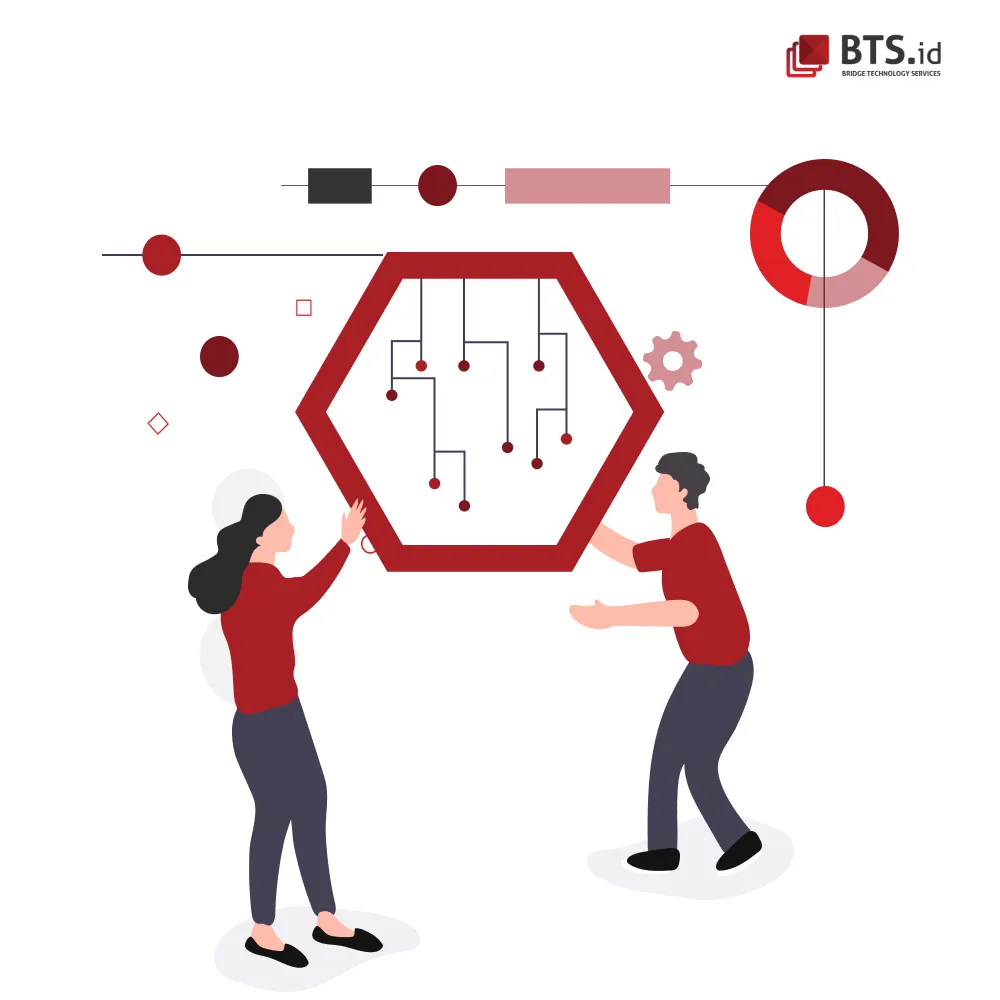
Best System Integrator Indonesia
With our exposure using the best industry practices, Bridge Technology Services (BTS.id) is experts in System Integrator solution. With us, you know your company will be in good hands. Design and build your dreams, guide your mind, and expand your future with System Integrator Bandung Bridge Technology Services.
Our integration capabilities includes:
– Progressive web app
– Realtime db
– Message Queue
– Service Bus
– Web-services
– Custom web controls
– Automatic Task Creation
– SAP Integration
– Payment Gateway
– Push Notification
– LDAP
– Websocket
– Mail Service integration
– SSO
– Enterprise Resource Planner
– Offline First Mobile App
– Dynamic Form
– Docker
– Unit Test
– OTP
– File Transfer/FTP
– Faas
– Saas
And providing services such are:
– Application systems plan, design, and implementation.
– Enterprise software package implementation, extension, and customization.
– Enterprise Application Integration
– Management training and change
– Knowledge transfer
– Ongoing systems and applications management and maintenance
– Scrum Based
– Manage cloud server On AWS
– Manage cloud server on AGP
– Migration data to system
– Hotfix
With years of experiences integrating softwares such as:
– Data Warehousing
– docker
– Kubernetes
– data analytics
– Java Virtual Terminal
– Cron Job
– JVM
– Geofencing
– Zipk in
– Prometheus
– Key cloak
– Microservice
– Generate Document Dynamically
– Dashboard Grafana
– Sonar Qube
– Connecting Core Banking
– Connecting API
– Dynamic Table Creation
– Dynamic Document consolidate report
– ETL
Looking for the best system integration company that can provide you with exceptional System Integration service? Look no further. Contact us:
Phone : (+62 22) 6614726
Email : info@bts.id
Metode Integrasi Sistem – Di artikel sebelumnya, kita telah membahas tentang System Integration: apa itu integrasi sistem dan bagaimana integrasi sistem bisa membantu bisnis Anda. Singkatnya, System Integration atau Integrasi Sistem adalah proses menghubungkan beberapa komponen independen, misalnya sistem IT, agar dapat saling berkomunikasi satu sama lain dan berfungsi sebagai satu sistem yang terkordinasi.
Di artikel kali ini, kita akan mengupas lebih dalam mengenai metode-metode Integrasi Sistem, dan apa keuntungan yang akan Anda dapatkan dengan mengintegrasikan sistem Anda.
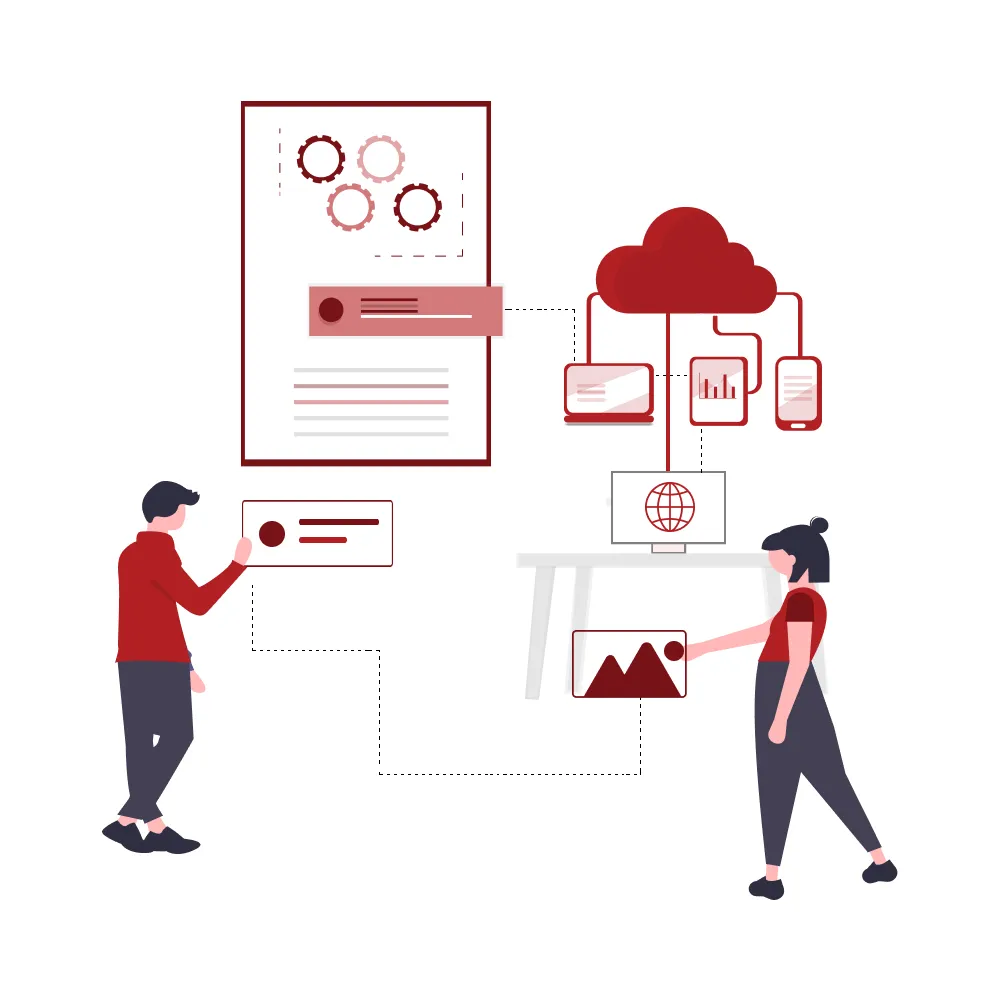
Metode Sistem Integrasi
Menurut Moore, system integrator bekerja mengintegrasi sistem menggunakan beberapa teknik seperti computer networking, integrasi aplikasi enterprise, manajemen proses bisnis, atau manual programming.
Integrasi Sistem biasa dilakukan dengan mempertimbangkan kebutuhan bisnis Anda menggunakan teknologi terbaru. Dapat diimplementasikan dengan beberapa cara yang diklasifikasikan menurut karakteristiknya, di antaranya:
Integrasi Vertikal (Vertical Integration)
Dengan integrasi vertikal, sub-sistem diintegrasikan menurut fungsinya dengan menciptakan entitas fungsional yang disebut ‘silo’. Sistem ini menciptakan silo dimulai dari fungsi dasar dan membangun setiap lapisan dan elemen secara vertikal (ke atas). Metode ini adalah metode integrasi paling dasar dan paling murah dan hanya melibatkan beberapa vendor, mitra, dan pengembang di awal, namun menjadi semakin mahal dari waktu ke waktu karena untuk memenuhi kebutuhan bisnis yang lebih luas, silo baru harus dibuat. Menggunakan kembali sub sistem untuk membuat fungsionalitas lain tidak dimungkinkan.
Integrasi Horizontal (Horizontal Integration)
Dengan metode integrasi horizontal, subsistem khusus diciptakan untuk menjembatani komunikasi antara subsistem lain dan memastikan bahwa hanya ada satu interface untuk berkomunikasi di antara subsistem. Kelebihan metode ini adalah setiap subsistem dapat digantikan dengan subsistem lain tanpa mempengaruhi subsistem yang ada, menggunakan data dan interface yang sama sekali berbeda. Selain dapat mengurangi biaya yang harus dikeluarkan untuk melakukan integrasi, kelebihan ini juga berarti fleksibilitas tingkat tinggi yang memungkinkan penggantian satu subsistem dengan subsistem lain yang memiliki fungsi serupa namun menghasilkan interface yang berbeda.
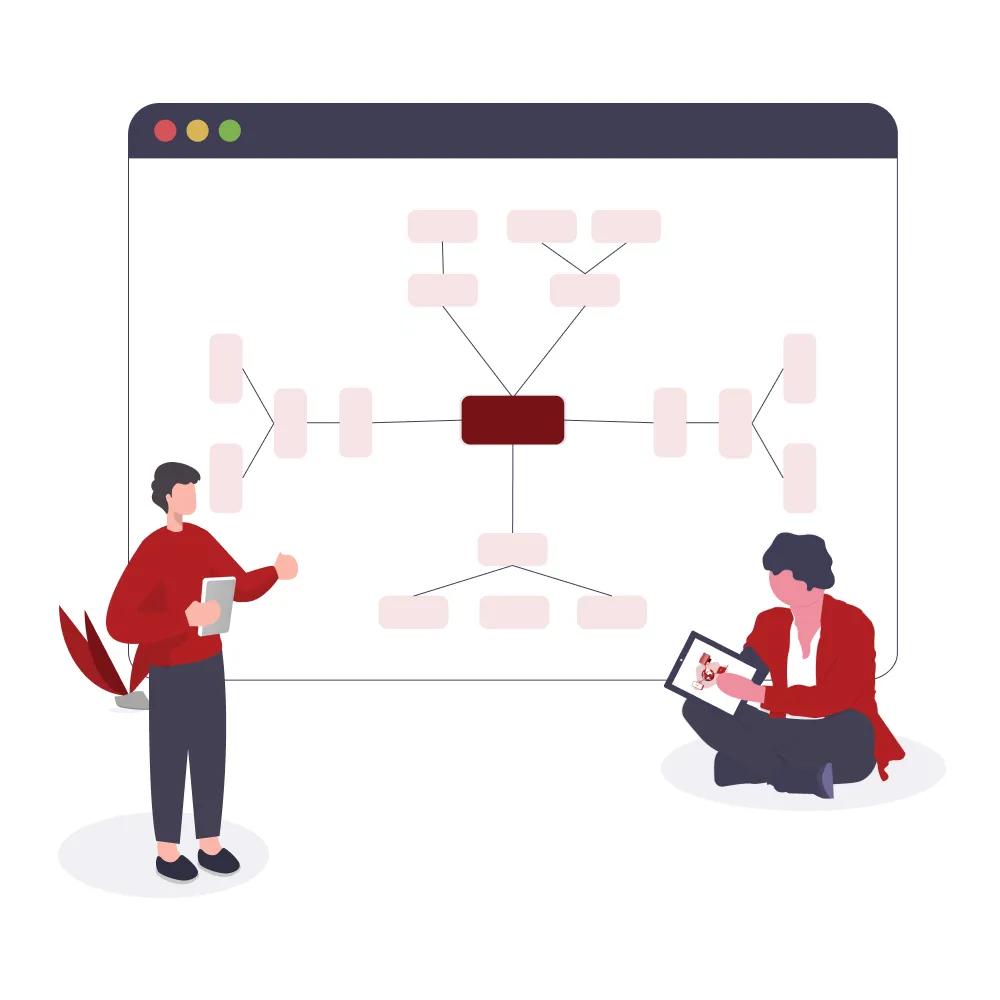
Integrasi Bintang atau Integrasi Spaghetti (Star Integration or Spaghetti Integration)
Metode point-to-point ini menghubungkan masing-masing sistem ke beberapa subsistem, membuat diagram yang dihasilkan terlihat seperti bintang. Namun, semakin banyak subsistem, semakin banyak koneksi yang diciptakan, dan sistem yang semakin besar akan terlihat seperti sepiring spaghetti. Mengelola sistem yang rumit dengan metode ini tidak mudah karena setiap perubahan dalam sistem akan berpengaruh pada subsistem yang terhubung. Meski demikian, dari segi fitur, metode ini lebih banyak dipilih karena fleksibilitas yang tinggi untuk penggunaan ulang fungsi-fungsi yang ada.
Integrasi Format Data Umum (Common Data Format Integration)
Integrasi sistem data yang berbeda biasanya membutuhkan transformasi data, yang berarti data yang dihasilkan satu sistem harus diubah menjadi format data berbeda yang digunakan oleh sistem penerima.
Dengan metode ini, sebuah format umum dibuat untuk menghindari ketergantungan pada adaptor yang dapat menerjemahkan berbagai format aplikasi menggunakan sistem intergrasi aplikasi perusahaan (EAI atau Enterprise Integration Application). Sistem integrasi aplikasi perusahaan (EAI) biasanya menetapkan format data aplikasi-independen. Layanan transformasi data untuk membantu konversi antara format spefisik aplikasi dan format umum biasanya dilakukan dalam dua langkah: adaptor mengubah informasi dari format aplikasi ke format umum bus. Selanjutnya, penerapan transformasi semantik (misalnya, mengubah kode pos ke nama kota, membelah/menggabungkan objek dari satu aplikasi menjadi objek di aplikasi lain, dll)
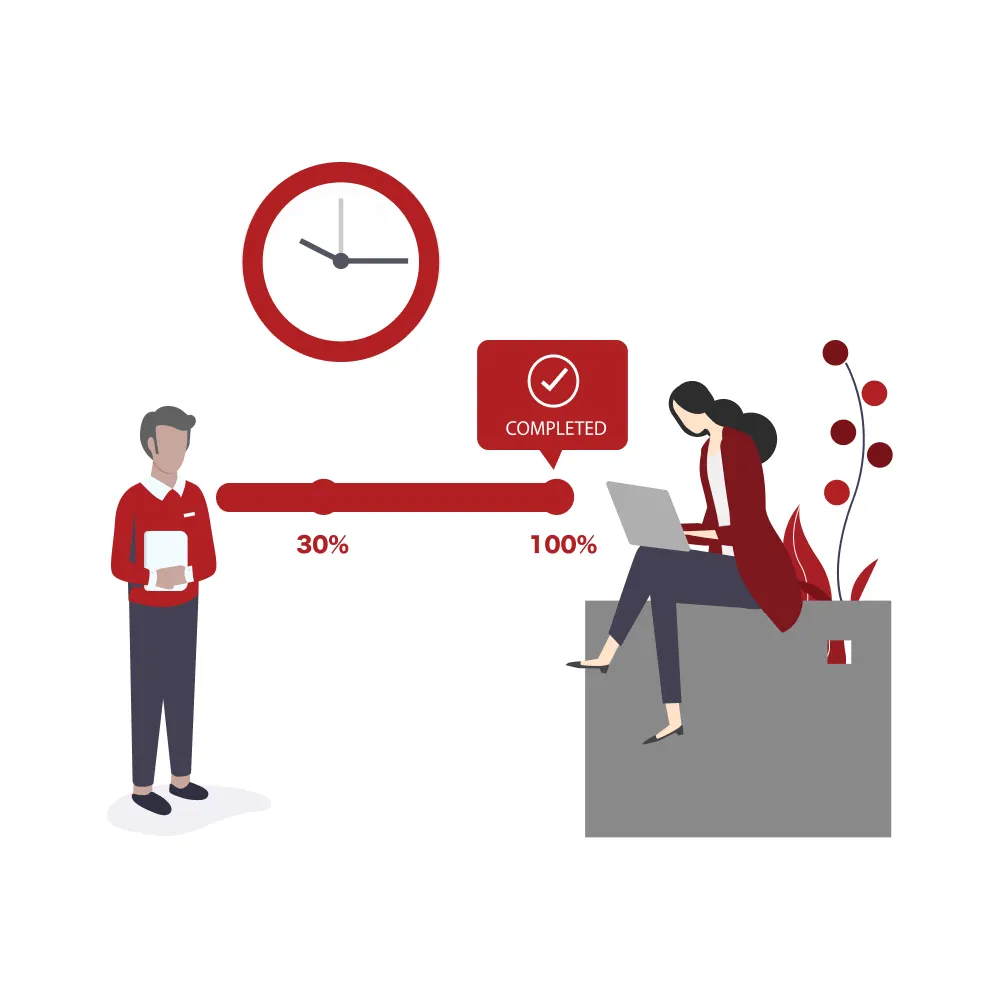
Keunggulan Integrasi Sistem
Integrasi sistem bisa jadi kunci kesuksesan perusahaan Anda. Tidak hanya melancarkan konektivitas data, mengintegrasi sistem di perusahaan Anda juga dapat mengurangi kemungkinan error, dan meningkatkan baik alur kerja internal organisasi maupun daya saing perusahaan Anda di pasaran. Dengan mengintegrasi sistem di perusahaan Anda, Anda dapat:
– Meningkatkan visibilitas real-time yang memungkinkan Anda untuk mengakses informasi terbaru. Departemen yang tidak saling terintegrasi dapat membuat akses informasi memakan waktu yang lama, itu pun dengan informasi yang belum tentu akurat. Integrasi sistem dapat meminimalisir resiko yang ditimbulkan informasi yang terlambat dan tidak akurat, juga memungkinkan Anda untuk membuat keputusan penting berdasarkan data-data tadi.
– Meningkatkan produktivitas karyawan dan efisiensi proses dengan adanya otomatisasi yang dapat menggantikan pekerjaan manual. Sebagai hasilnya, pegawai Anda dapat fokus pada tugas utama mereka alih-alih berulang kali meng-input data pada setiap subsistem berbeda yang digunakan oleh perusahaan. Mengintegrasikan sebagian besar proses di perusahaan juga dapat mengurangi kebutuhan akan lebih banyak pegawai.
– Meningkatkan penjualan dengan customer experience dan customer service yang lebih baik sebagai hasil dari konektivitas data di seluruh departemen. Dari sudut pandang pelanggan, konektivitas data memungkinkan mereka untuk melihat ketersediaan produk yang mereka cari, dan menyajikan proses berbelanja yang lebih mudah dan lancar. Dari sudut pandang pegawai, konektivitas data memungkinkan mereka untuk menjawab kebutuhan pelanggan dengan cepat.
– Menghemat waktu dan biaya dengan pengambilan keputusan yang lebih baik dan sistem otimatis yang memungkinkan Anda untuk fokus mencari pelanggan dan mengembangkan keterampilan baru yang nantinya dapat memberi Anda lebih banyak peluang untuk bertumbuh.
– Mengumpulkan data yang dapat bermanfaat untuk pengambilan keputusan berkat sistem terpusat yang dapat memberikan hasil yang lebih akurat.
Selanjutnya: Sebelum melakukan Integrasi Sistem Part. 3: Tahapan Proses Integrasi Sistem.
Cari tahu metode integrasi sistem mana yang cocok untuk perusahaan Anda. Konsultasikan kebutuhan bisnis Anda dengan Bridge Technology Services (BTS.id). Hubungi kami:
Telp : (+62 22) 6614726
Email : info@bts.id
Saat mencari System Integrator terbaik di Indonesia yang dapat membantu Anda melakukan integrasi sistem, sangat penting untuk menemukan System Integrator yang mengerti visi dan misi Anda, serta dapat membantu Anda mencapai tujuan bisnis tanpa banyak kendala.
Bagaimanapun, untuk pekerjaan sepenting integrasi sistem dan proses bisnis perusahaan, Anda tentu ingin bekerja dengan partner andal yang dapat memberikan solusi terbaik, bukan?
Sejak berdiri di tahun 2008, selama bertahun-tahun, Bridge Technology Services (BTS.id) telah bekerja dengan berbagai jenis perusahaan dari berbagai daerah di Indonesia. Sebagai Software House, kami telah membantu klien kami untuk mencapai tujuan bisnis melalui produk dan layanan perangkat lunak, business intelligence, big data, dan outsourcing sumber daya manusia berkualitas tinggi. Dengan pengalaman yang luas di berbagai sektor industri, kami melihat kebutuhan Anda melalui perspektif yang unik, menjadikan kami partner yang kompeten dan dapat diandalkan, serta sesuai untuk berbagai tantangan bisnis yang ada.
Kami selalu berusaha menjawab tantangan dengan sungguh-sungguh, sehingga saat klien kami bertumbuh, begitu juga perusahaan kami.
Kini, kami telah tumbuh menjadi full-service system integrator yang siap membantu perusahaan Anda bertransformasi secara digital. Dengan layanan yang komprehensif dari mulai konsultasi, analisis, perencanaan, hingga implementasi, Anda dapat mengandalkan kami untuk mengintegrasi sistem Anda tanpa kendala.

Mengapa Saya Membutuhkan Integrasi Sistem?
Saat bisnis Anda semakin berkembang, wajar jika kemudian kebutuhan akan system integrator juga bertambah. Awalnya, Anda mungkin berpikir bahwa membeli beberapa aplikasi secara terpisah akan lebih murah dan efektif dibanding membeli satu solusi yang utuh yang menyeluruh. Namun, saat protokol, format, dan teknologi kemudian berkembang dan aplikasi yang berbeda berkembang dengan cara yang berbeda pula, ekosistem dengan aplikasi-aplikasi yang tidak bisa bekerja sama akan mengakibatkan kebingungan, duplikasi data, dan inkonsistensi di dalam sistem.
Pegawai Anda akan mulai kesulitan untuk bekerja secara efisien, yang akan berimbas pada kesejahteraan perusahaan.
Untuk mengatasi tantangan yang hadir, ada beberapa cara yang bisa Anda lakukan. Misalnya, membeli perangkat lunak siap pakai (off the shelf), memesan perangkat lunak yang dibuat khusus untuk kebutuhan perusahaan Anda (custom-made), atau mengintegrasi sistem-sistem yang telah Anda pakai selama ini (system integration), yang tidak saja lebih hemat dari segi biaya, namun dari segi waktu yang harus pegawai Anda habiskan untuk mempelajari sistem baru.
Tidak hanya krusial, integrasi sistem juga dapat memberi banyak keuntungan bagi bisnis Anda. Meski demikian, sebelum merekrut system integrator untuk membantu Anda, cari tahu dulu apa itu integrasi sistem, dan bagaimana integrasi sistem dapat membantu bisnis Anda meraih kesuksesan

Apa itu Integrasi Sistem?
Secara sederhana, Integrasi Sistem adalah suatu proses menghubungkan berbagai komponen yang mulanya independen, agar dapat bekerja sebagai satu sistem utuhi. Sebagai solusi perangkat lunak, mengintegrasi sistem berarti menggabungkan beberapa sistem IT berbeda yang kebanyakan diproduksi oleh vendor yang berbeda pula, sehingga mereka dapat berkomunikasi satu sama lain dan bekerja secara fungsional sebagai satu kesatuan yang terkordinasi.
Membeli perangkat secara terpisah alih-alih mengembangkan satu sistem yang utuh dan menyeluruh memang akan terasa lebih murah dan mudah saat memulai bisnis. Anda juga mungkin ingin mulai dengan apa yang Anda butuhkan pada saat itu. Namun, saat bisnis Anda berkembang dan proses bisnis bertambah, kebutuhan akan sistem baru juga akan ikut meningkat, dan penambahan perangkat baru, meski lebih murah, bisa jadi berbahaya bagi bisnis Anda.
Sebagai gambaran, misalnya saja Anda memulai bisnis dengan beberapa sistem sederhana seperti perangkat lunak untuk akunting dan pembukuan. Seiring waktu berjalan, bisnis Anda pun semakin berkembang dan pelanggan Anda kian bertambah, dan tanpa bisa dihindari begitu pula dengan proses bisnis yang berlangsung di perusahaan. Di titik ini, Anda akan harus mengelola data yang lebih besar dan menambah lebih banyak sistem. Tanpa disadari, semakin banyak perangkat baru yang Anda tambahkan–untuk melacak inventori, data pelanggan, manajemen pesanan, dan lain-lain–yang akhirnya membuat arsitektur sistem Anda kusut dan proses bisnis menjadi tak efisien.

Hasilnya bisa ditebak: manajemen data yang tidak efisien, hilangnya produktivitas karena harus mengoperasikan banyak aplikasi berbeda, dan ketidakmampuan perusahaan untuk memenuhi permintaan klien. Dengan mengintegrasi sistem di perusahaan Anda, Anda tidak perlu lagi meng-input data secara manual ke dalam masing-masing sistem. Lagipula, tidak semua program baru yang Anda beli akan cocok dengan sistem yang sudah ada di perusahaan Anda, dan semakin banyak program yang Anda tambahkan, akan semakin sulit untuk mengintegrasinya dengan workflow yang ada.
Integrasi sistem adalah proses yang rumit. Maka dari itu, untuk melakukannya, Anda akan membutuhkan bantuan system integrator–baik itu dalam bentuk perusahaan, atau sebuah tim yang berisi orang-orang yang ahli–untuk mengintegrasi sistem-sistem yang berlainan–baik itu perangkat keras, perangkat lunak, maupun sistem komunikasi–di perusahaan Anda.
Selanjutnya: Sebelum melakukan Integrasi Sistem Part. 2: Bagaimana dan Mengapa Integrasi Sistem?
Siap untuk melakukan integrasi sistem? Hubungi kami:
Telp: (+62 22) 6614726
Email: info@bts.id
When it comes to outsourcing your company’s System Integration, finding the best System Integrator Indonesia that understand your goal and vision, and can achieve your business objective without any trouble, are the most important thing that you should consider when choosing a partner to help you success.
After all, for something as important as integrating your business process and system, you would want to work with a reliable partner that can bring you the best solution without compromise.
Founded in 2008, for years Bridge Technology Services (BTS.id) has been working with companies across the country. As a Software House, we have been assisting our clients to achieve their goals by providing software products and services, business intelligence, big data, and high-caliber talent sourcing. Our extensive experience in nearly all industries, giving us a unique perspective that makes us a competent and reliable partner perfect for every challenge.
We take our clients’ challenge that seriously so that when our clients grow, we grow too.
Today, we have grown to be a full-service system integrator that offers companies multiple ways to embrace their unique digital transformation journey. We have progressed and is ready to give you a seamless System Integration process. Serving you with comprehensive services from consultation, analysis, planning, till implementation and support.

When would I need a System Integration?
When your business grows, it is only natural that the importance for a system integrator will grow as well. At the beginning, you may think that instead of acquiring an entire software solution, purchasing several independent tools will be way much cheaper and more effective. But as protocols, formats, and technologies evolve and different applications develop differently, disjunct ecosystem with applications that do not cooperate with each other will only result in confusion, duplication, and inconsistencies in the system.
Employees will have difficulties to work efficiently, and company will struggling to prosper.
To deal with the challenge and remain competitive, the options are either to buy off-the-shelf software, order a solution specifically tailored to meet your exact needs. Or, you can have your already existing and used systems integrated into one, which will save not only your money, but also time that your employees will need to learn how to use a new system.
Whilts System Integration is crucial and have a lot of benefits for companies, before planning to hire a system integrator, find what a system integration can do to help your company success.

What is System Integration?
In simple words, System Integration is the process of linking various independent components to act as one co-ordinated system. As a software solution, integrating system means to put different IT systems which often come from different vendors together, enable them to communicate with each other and work functionally as a coordinated whole.
When starting a business, choosing several components is always seems like a better option. It is cheaper than having to develop an entire system. And you might want to start small with acquiring only what you really need at that moment anyway. However, as your business evolves, you will realised that you need more tools to handle more processes. Adding more components is indeed cheaper, but it is also harmful to your organization.
Starting small, you might only wanted to acquire what you really need at that moment. Probably softwares that can help you with accounts and bookkeeping. Then, your business grows and you have to deal with more and more customers. At this point, adding more processes is inevitable. You will acquire more data and add more systems. Soon as your business evolve, you will need something to keep track of your inventory, customer data, order management, and so on till the architecture of your system becomes a tangle web of inefficient processes and disparate applications.

The results are predictable: inefficient data management, employees losing productivity cause by having to use multiple applications and company will struggle to meet the demands of the clients. By integrating your system, you can avoid having to re-enter data to each of your system manually. After all, not all programs can play nicely together with the already existed system. And as you add more programs, it will become harder to integrate them into your current workflows.
To help you with the complicated process of System Integration, you will need a system integrator–whether it’s a company or a team of professionals–that can streamline your disparate systems, including existing hardwares, softwares, and communications seamlessly.
Read Next: Planning on System Integration part. 2: How and Why Should You Integrate Your System?
Ready to integrate your system? Contact us:
Phone : (+62 22) 6614726
Email : info@bts.id
System Integration Process – When integrating your system, one of the important factors of successful System Integration is the System Integrator you are working with.
After learning about what is System Integration, why should you integrate your system, and various methods of System Integration in the previous articles, now, we will find out how exactly a System Integrator would integrate your system.

Phases of System Integration Process
System Integration is a complex task, hence the importance of hiring a reliable system integrator that can assist you with comprehensive integration service, from simple internal point-to-point connections to intricate many-to-many integrations both internally and with the third parties.
To solve your problem, a system integrator will usually design, implement, and test the integration solution, in 7 equally important phases of System Integration, which are:
1. Requirements and Specifications Gathering
The first step is where you have to share your goals with the system integrator you are going to work with. In order to provide you with the best practice and most efficient solution, it is crucial for a system integrator to know how exactly you and your team expect the system to be in the future. In this phase, you will have to list out the detailed requirements to make, as every company uses different subsystems and achieve different goals.
2. Feasibility Analysis
What you want is not always what you actually need. In this phase, after all the requirements, specifications, and expectations are listed down, a feasibility analysis will be conducted to determine operational feasibility. Your requirements will be analyzed and translated into needs to support the decision making process regarding the integration process your system will go through.
3. Architecture and Development Design
While it is true that System Integration can help to boost your productivity and improve your workflow, ensuring seamless connectivity between all the components should be the main objective of integrating your system. To achieve the goal, a proper architecture design regarding how the system should be integrated to the other comprehensive system should be well-planned, and a strong foundation need to be built to eliminate all the possible risks. Usually, an integration plan blueprints consists of proposed architecture plan is created to help both parties visualise the process.
4. Management Plan
Once the complete plan of the system integration process is approved and released, the next step is creating a management plan. A management plan is usually comprises risk factor calculations, project execution plan, alternative listing, etc.
5. System Integration Design
Next, is System Integration Design, presumably the longest and most challenging phase of System Integration process. An actual integration is performed, consist of creating the physical equivalent of the architecture design which is rather logical. This phase comprises some processes such as preliminary designs, detailed designs, system tests etc.
6. Implementation
Once the system is ready, it will be verified and tested thoroughly. Detected bugs and errors in the system will be fixed before the system undergoes another operational testing to make the product error-free. Afterwards, the integrated system will be deployed and ready to be utilized by your employee. The implementation phase may take a while because in order to feel the results of the integration process, you need to make sure everyone in your team able to correctly operate the new system
7. Evaluation and Maintenance
In this last phase of integration process, the functioning of the integrated system will be checked thoroughly. If there is any inconvenience in operation or missing feature, the lacking components can be fixed, added, or modified. This phase includes checking, maintaining, modifying, and enhancing the components. After all, compared to off-the-shelf solution, having your subsystems integrated by a professional company will give you the benefit of having your product works flawlessly according to your specific needs even after it is released.
Read also: Planning on System Integration Part. 1: What is System Integration?

Best System Integrator Indonesia
With our exposure using the best industry practices, Bridge Technology Services (BTS.id) is experts in System Integrator solution. With us, you know your company will be in good hands. Design and build your dreams, guide your mind, and expand your future with System Integrator Bandung Bridge Technology Services.
Our integration capabilities includes:
– Progressive web app
– Realtime db
– Message Queue
– Service Bus
– Web-services
– Custom web controls
– Automatic Task Creation
– SAP Integration
– Payment Gateway
– Push Notification
– LDAP
– Websocket
– Mail Service integration
– SSO
– Enterprise Resource Planner
– Offline First Mobile App
– Dynamic Form
– Docker
– Unit Test
– OTP
– File Transfer/FTP
– Faas
– Saas
And providing services such are:
– Application systems plan, design, and implementation.
– Enterprise software package implementation, extension, and customization.
– Enterprise Application Integration
– Management training and change
– Knowledge transfer
– Ongoing systems and applications management and maintenance
– Scrum Based
– Manage cloud server On AWS
– Manage cloud server on AGP
– Migration data to system
– Hotfix
With years of experiences integrating softwares such as:
– Data Warehousing
– docker
– Kubernetes
– data analytics
– Java Virtual Terminal
– Cron Job
– JVM
– Geofencing
– Zipk in
– Prometheus
– Key cloak
– Microservice
– Generate Document Dynamically
– Dashboard Grafana
– Sonar Qube
– Connecting Core Banking
– Connecting API
– Dynamic Table Creation
– Dynamic Document consolidate report
– ETL
Looking for the best system integration company that can provide you with exceptional System Integration service? Look no further. Contact us:
Phone : (+62 22) 6614726
Email : info@bts.id
Metode Integrasi Sistem – Di artikel sebelumnya, kita telah membahas tentang System Integration: apa itu integrasi sistem dan bagaimana integrasi sistem bisa membantu bisnis Anda. Singkatnya, System Integration atau Integrasi Sistem adalah proses menghubungkan beberapa komponen independen, misalnya sistem IT, agar dapat saling berkomunikasi satu sama lain dan berfungsi sebagai satu sistem yang terkordinasi.
Di artikel kali ini, kita akan mengupas lebih dalam mengenai metode-metode Integrasi Sistem, dan apa keuntungan yang akan Anda dapatkan dengan mengintegrasikan sistem Anda.

Metode Sistem Integrasi
Menurut Moore, system integrator bekerja mengintegrasi sistem menggunakan beberapa teknik seperti computer networking, integrasi aplikasi enterprise, manajemen proses bisnis, atau manual programming.
Integrasi Sistem biasa dilakukan dengan mempertimbangkan kebutuhan bisnis Anda menggunakan teknologi terbaru. Dapat diimplementasikan dengan beberapa cara yang diklasifikasikan menurut karakteristiknya, di antaranya:
Integrasi Vertikal (Vertical Integration)
Dengan integrasi vertikal, sub-sistem diintegrasikan menurut fungsinya dengan menciptakan entitas fungsional yang disebut ‘silo’. Sistem ini menciptakan silo dimulai dari fungsi dasar dan membangun setiap lapisan dan elemen secara vertikal (ke atas). Metode ini adalah metode integrasi paling dasar dan paling murah dan hanya melibatkan beberapa vendor, mitra, dan pengembang di awal, namun menjadi semakin mahal dari waktu ke waktu karena untuk memenuhi kebutuhan bisnis yang lebih luas, silo baru harus dibuat. Menggunakan kembali sub sistem untuk membuat fungsionalitas lain tidak dimungkinkan.
Integrasi Horizontal (Horizontal Integration)
Dengan metode integrasi horizontal, subsistem khusus diciptakan untuk menjembatani komunikasi antara subsistem lain dan memastikan bahwa hanya ada satu interface untuk berkomunikasi di antara subsistem. Kelebihan metode ini adalah setiap subsistem dapat digantikan dengan subsistem lain tanpa mempengaruhi subsistem yang ada, menggunakan data dan interface yang sama sekali berbeda. Selain dapat mengurangi biaya yang harus dikeluarkan untuk melakukan integrasi, kelebihan ini juga berarti fleksibilitas tingkat tinggi yang memungkinkan penggantian satu subsistem dengan subsistem lain yang memiliki fungsi serupa namun menghasilkan interface yang berbeda.

Integrasi Bintang atau Integrasi Spaghetti (Star Integration or Spaghetti Integration)
Metode point-to-point ini menghubungkan masing-masing sistem ke beberapa subsistem, membuat diagram yang dihasilkan terlihat seperti bintang. Namun, semakin banyak subsistem, semakin banyak koneksi yang diciptakan, dan sistem yang semakin besar akan terlihat seperti sepiring spaghetti. Mengelola sistem yang rumit dengan metode ini tidak mudah karena setiap perubahan dalam sistem akan berpengaruh pada subsistem yang terhubung. Meski demikian, dari segi fitur, metode ini lebih banyak dipilih karena fleksibilitas yang tinggi untuk penggunaan ulang fungsi-fungsi yang ada.
Integrasi Format Data Umum (Common Data Format Integration)
Integrasi sistem data yang berbeda biasanya membutuhkan transformasi data, yang berarti data yang dihasilkan satu sistem harus diubah menjadi format data berbeda yang digunakan oleh sistem penerima.
Dengan metode ini, sebuah format umum dibuat untuk menghindari ketergantungan pada adaptor yang dapat menerjemahkan berbagai format aplikasi menggunakan sistem intergrasi aplikasi perusahaan (EAI atau Enterprise Integration Application). Sistem integrasi aplikasi perusahaan (EAI) biasanya menetapkan format data aplikasi-independen. Layanan transformasi data untuk membantu konversi antara format spefisik aplikasi dan format umum biasanya dilakukan dalam dua langkah: adaptor mengubah informasi dari format aplikasi ke format umum bus. Selanjutnya, penerapan transformasi semantik (misalnya, mengubah kode pos ke nama kota, membelah/menggabungkan objek dari satu aplikasi menjadi objek di aplikasi lain, dll)

Keunggulan Integrasi Sistem
Integrasi sistem bisa jadi kunci kesuksesan perusahaan Anda. Tidak hanya melancarkan konektivitas data, mengintegrasi sistem di perusahaan Anda juga dapat mengurangi kemungkinan error, dan meningkatkan baik alur kerja internal organisasi maupun daya saing perusahaan Anda di pasaran. Dengan mengintegrasi sistem di perusahaan Anda, Anda dapat:
– Meningkatkan visibilitas real-time yang memungkinkan Anda untuk mengakses informasi terbaru. Departemen yang tidak saling terintegrasi dapat membuat akses informasi memakan waktu yang lama, itu pun dengan informasi yang belum tentu akurat. Integrasi sistem dapat meminimalisir resiko yang ditimbulkan informasi yang terlambat dan tidak akurat, juga memungkinkan Anda untuk membuat keputusan penting berdasarkan data-data tadi.
– Meningkatkan produktivitas karyawan dan efisiensi proses dengan adanya otomatisasi yang dapat menggantikan pekerjaan manual. Sebagai hasilnya, pegawai Anda dapat fokus pada tugas utama mereka alih-alih berulang kali meng-input data pada setiap subsistem berbeda yang digunakan oleh perusahaan. Mengintegrasikan sebagian besar proses di perusahaan juga dapat mengurangi kebutuhan akan lebih banyak pegawai.
– Meningkatkan penjualan dengan customer experience dan customer service yang lebih baik sebagai hasil dari konektivitas data di seluruh departemen. Dari sudut pandang pelanggan, konektivitas data memungkinkan mereka untuk melihat ketersediaan produk yang mereka cari, dan menyajikan proses berbelanja yang lebih mudah dan lancar. Dari sudut pandang pegawai, konektivitas data memungkinkan mereka untuk menjawab kebutuhan pelanggan dengan cepat.
– Menghemat waktu dan biaya dengan pengambilan keputusan yang lebih baik dan sistem otimatis yang memungkinkan Anda untuk fokus mencari pelanggan dan mengembangkan keterampilan baru yang nantinya dapat memberi Anda lebih banyak peluang untuk bertumbuh.
– Mengumpulkan data yang dapat bermanfaat untuk pengambilan keputusan berkat sistem terpusat yang dapat memberikan hasil yang lebih akurat.
Selanjutnya: Sebelum melakukan Integrasi Sistem Part. 3: Tahapan Proses Integrasi Sistem.
Cari tahu metode integrasi sistem mana yang cocok untuk perusahaan Anda. Konsultasikan kebutuhan bisnis Anda dengan Bridge Technology Services (BTS.id). Hubungi kami:
Telp : (+62 22) 6614726
Email : info@bts.id
Saat mencari System Integrator terbaik di Indonesia yang dapat membantu Anda melakukan integrasi sistem, sangat penting untuk menemukan System Integrator yang mengerti visi dan misi Anda, serta dapat membantu Anda mencapai tujuan bisnis tanpa banyak kendala.
Bagaimanapun, untuk pekerjaan sepenting integrasi sistem dan proses bisnis perusahaan, Anda tentu ingin bekerja dengan partner andal yang dapat memberikan solusi terbaik, bukan?
Sejak berdiri di tahun 2008, selama bertahun-tahun, Bridge Technology Services (BTS.id) telah bekerja dengan berbagai jenis perusahaan dari berbagai daerah di Indonesia. Sebagai Software House, kami telah membantu klien kami untuk mencapai tujuan bisnis melalui produk dan layanan perangkat lunak, business intelligence, big data, dan outsourcing sumber daya manusia berkualitas tinggi. Dengan pengalaman yang luas di berbagai sektor industri, kami melihat kebutuhan Anda melalui perspektif yang unik, menjadikan kami partner yang kompeten dan dapat diandalkan, serta sesuai untuk berbagai tantangan bisnis yang ada.
Kami selalu berusaha menjawab tantangan dengan sungguh-sungguh, sehingga saat klien kami bertumbuh, begitu juga perusahaan kami.
Kini, kami telah tumbuh menjadi full-service system integrator yang siap membantu perusahaan Anda bertransformasi secara digital. Dengan layanan yang komprehensif dari mulai konsultasi, analisis, perencanaan, hingga implementasi, Anda dapat mengandalkan kami untuk mengintegrasi sistem Anda tanpa kendala.

Mengapa Saya Membutuhkan Integrasi Sistem?
Saat bisnis Anda semakin berkembang, wajar jika kemudian kebutuhan akan system integrator juga bertambah. Awalnya, Anda mungkin berpikir bahwa membeli beberapa aplikasi secara terpisah akan lebih murah dan efektif dibanding membeli satu solusi yang utuh yang menyeluruh. Namun, saat protokol, format, dan teknologi kemudian berkembang dan aplikasi yang berbeda berkembang dengan cara yang berbeda pula, ekosistem dengan aplikasi-aplikasi yang tidak bisa bekerja sama akan mengakibatkan kebingungan, duplikasi data, dan inkonsistensi di dalam sistem.
Pegawai Anda akan mulai kesulitan untuk bekerja secara efisien, yang akan berimbas pada kesejahteraan perusahaan.
Untuk mengatasi tantangan yang hadir, ada beberapa cara yang bisa Anda lakukan. Misalnya, membeli perangkat lunak siap pakai (off the shelf), memesan perangkat lunak yang dibuat khusus untuk kebutuhan perusahaan Anda (custom-made), atau mengintegrasi sistem-sistem yang telah Anda pakai selama ini (system integration), yang tidak saja lebih hemat dari segi biaya, namun dari segi waktu yang harus pegawai Anda habiskan untuk mempelajari sistem baru.
Tidak hanya krusial, integrasi sistem juga dapat memberi banyak keuntungan bagi bisnis Anda. Meski demikian, sebelum merekrut system integrator untuk membantu Anda, cari tahu dulu apa itu integrasi sistem, dan bagaimana integrasi sistem dapat membantu bisnis Anda meraih kesuksesan

Apa itu Integrasi Sistem?
Secara sederhana, Integrasi Sistem adalah suatu proses menghubungkan berbagai komponen yang mulanya independen, agar dapat bekerja sebagai satu sistem utuhi. Sebagai solusi perangkat lunak, mengintegrasi sistem berarti menggabungkan beberapa sistem IT berbeda yang kebanyakan diproduksi oleh vendor yang berbeda pula, sehingga mereka dapat berkomunikasi satu sama lain dan bekerja secara fungsional sebagai satu kesatuan yang terkordinasi.
Membeli perangkat secara terpisah alih-alih mengembangkan satu sistem yang utuh dan menyeluruh memang akan terasa lebih murah dan mudah saat memulai bisnis. Anda juga mungkin ingin mulai dengan apa yang Anda butuhkan pada saat itu. Namun, saat bisnis Anda berkembang dan proses bisnis bertambah, kebutuhan akan sistem baru juga akan ikut meningkat, dan penambahan perangkat baru, meski lebih murah, bisa jadi berbahaya bagi bisnis Anda.
Sebagai gambaran, misalnya saja Anda memulai bisnis dengan beberapa sistem sederhana seperti perangkat lunak untuk akunting dan pembukuan. Seiring waktu berjalan, bisnis Anda pun semakin berkembang dan pelanggan Anda kian bertambah, dan tanpa bisa dihindari begitu pula dengan proses bisnis yang berlangsung di perusahaan. Di titik ini, Anda akan harus mengelola data yang lebih besar dan menambah lebih banyak sistem. Tanpa disadari, semakin banyak perangkat baru yang Anda tambahkan–untuk melacak inventori, data pelanggan, manajemen pesanan, dan lain-lain–yang akhirnya membuat arsitektur sistem Anda kusut dan proses bisnis menjadi tak efisien.

Hasilnya bisa ditebak: manajemen data yang tidak efisien, hilangnya produktivitas karena harus mengoperasikan banyak aplikasi berbeda, dan ketidakmampuan perusahaan untuk memenuhi permintaan klien. Dengan mengintegrasi sistem di perusahaan Anda, Anda tidak perlu lagi meng-input data secara manual ke dalam masing-masing sistem. Lagipula, tidak semua program baru yang Anda beli akan cocok dengan sistem yang sudah ada di perusahaan Anda, dan semakin banyak program yang Anda tambahkan, akan semakin sulit untuk mengintegrasinya dengan workflow yang ada.
Integrasi sistem adalah proses yang rumit. Maka dari itu, untuk melakukannya, Anda akan membutuhkan bantuan system integrator–baik itu dalam bentuk perusahaan, atau sebuah tim yang berisi orang-orang yang ahli–untuk mengintegrasi sistem-sistem yang berlainan–baik itu perangkat keras, perangkat lunak, maupun sistem komunikasi–di perusahaan Anda.
Selanjutnya: Sebelum melakukan Integrasi Sistem Part. 2: Bagaimana dan Mengapa Integrasi Sistem?
Siap untuk melakukan integrasi sistem? Hubungi kami:
Telp: (+62 22) 6614726
Email: info@bts.id
When it comes to outsourcing your company’s System Integration, finding the best System Integrator Indonesia that understand your goal and vision, and can achieve your business objective without any trouble, are the most important thing that you should consider when choosing a partner to help you success.
After all, for something as important as integrating your business process and system, you would want to work with a reliable partner that can bring you the best solution without compromise.
Founded in 2008, for years Bridge Technology Services (BTS.id) has been working with companies across the country. As a Software House, we have been assisting our clients to achieve their goals by providing software products and services, business intelligence, big data, and high-caliber talent sourcing. Our extensive experience in nearly all industries, giving us a unique perspective that makes us a competent and reliable partner perfect for every challenge.
We take our clients’ challenge that seriously so that when our clients grow, we grow too.
Today, we have grown to be a full-service system integrator that offers companies multiple ways to embrace their unique digital transformation journey. We have progressed and is ready to give you a seamless System Integration process. Serving you with comprehensive services from consultation, analysis, planning, till implementation and support.

When would I need a System Integration?
When your business grows, it is only natural that the importance for a system integrator will grow as well. At the beginning, you may think that instead of acquiring an entire software solution, purchasing several independent tools will be way much cheaper and more effective. But as protocols, formats, and technologies evolve and different applications develop differently, disjunct ecosystem with applications that do not cooperate with each other will only result in confusion, duplication, and inconsistencies in the system.
Employees will have difficulties to work efficiently, and company will struggling to prosper.
To deal with the challenge and remain competitive, the options are either to buy off-the-shelf software, order a solution specifically tailored to meet your exact needs. Or, you can have your already existing and used systems integrated into one, which will save not only your money, but also time that your employees will need to learn how to use a new system.
Whilts System Integration is crucial and have a lot of benefits for companies, before planning to hire a system integrator, find what a system integration can do to help your company success.

What is System Integration?
In simple words, System Integration is the process of linking various independent components to act as one co-ordinated system. As a software solution, integrating system means to put different IT systems which often come from different vendors together, enable them to communicate with each other and work functionally as a coordinated whole.
When starting a business, choosing several components is always seems like a better option. It is cheaper than having to develop an entire system. And you might want to start small with acquiring only what you really need at that moment anyway. However, as your business evolves, you will realised that you need more tools to handle more processes. Adding more components is indeed cheaper, but it is also harmful to your organization.
Starting small, you might only wanted to acquire what you really need at that moment. Probably softwares that can help you with accounts and bookkeeping. Then, your business grows and you have to deal with more and more customers. At this point, adding more processes is inevitable. You will acquire more data and add more systems. Soon as your business evolve, you will need something to keep track of your inventory, customer data, order management, and so on till the architecture of your system becomes a tangle web of inefficient processes and disparate applications.

The results are predictable: inefficient data management, employees losing productivity cause by having to use multiple applications and company will struggle to meet the demands of the clients. By integrating your system, you can avoid having to re-enter data to each of your system manually. After all, not all programs can play nicely together with the already existed system. And as you add more programs, it will become harder to integrate them into your current workflows.
To help you with the complicated process of System Integration, you will need a system integrator–whether it’s a company or a team of professionals–that can streamline your disparate systems, including existing hardwares, softwares, and communications seamlessly.
Read Next: Planning on System Integration part. 2: How and Why Should You Integrate Your System?
Ready to integrate your system? Contact us:
Phone : (+62 22) 6614726
Email : info@bts.id
MORE ARTICLE
BRIDGE TECHNOLOGY SERVICES
MORE ARTICLE
BRIDGE TECHNOLOGY SERVICES

